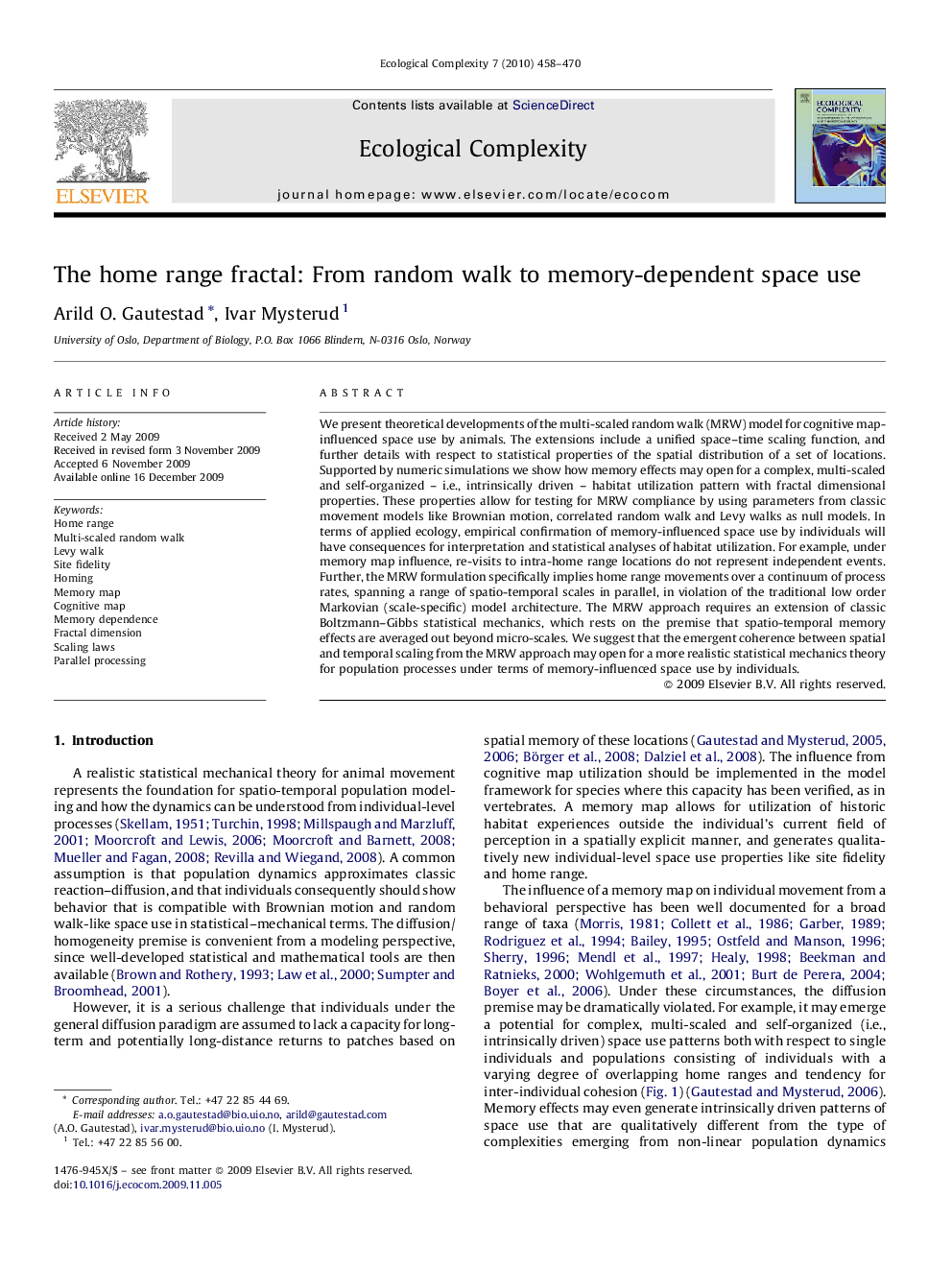| Article ID | Journal | Published Year | Pages | File Type |
|---|---|---|---|---|
| 4372582 | Ecological Complexity | 2010 | 13 Pages |
Abstract
We present theoretical developments of the multi-scaled random walk (MRW) model for cognitive map-influenced space use by animals. The extensions include a unified space-time scaling function, and further details with respect to statistical properties of the spatial distribution of a set of locations. Supported by numeric simulations we show how memory effects may open for a complex, multi-scaled and self-organized - i.e., intrinsically driven - habitat utilization pattern with fractal dimensional properties. These properties allow for testing for MRW compliance by using parameters from classic movement models like Brownian motion, correlated random walk and Levy walks as null models. In terms of applied ecology, empirical confirmation of memory-influenced space use by individuals will have consequences for interpretation and statistical analyses of habitat utilization. For example, under memory map influence, re-visits to intra-home range locations do not represent independent events. Further, the MRW formulation specifically implies home range movements over a continuum of process rates, spanning a range of spatio-temporal scales in parallel, in violation of the traditional low order Markovian (scale-specific) model architecture. The MRW approach requires an extension of classic Boltzmann-Gibbs statistical mechanics, which rests on the premise that spatio-temporal memory effects are averaged out beyond micro-scales. We suggest that the emergent coherence between spatial and temporal scaling from the MRW approach may open for a more realistic statistical mechanics theory for population processes under terms of memory-influenced space use by individuals.
Keywords
Related Topics
Life Sciences
Agricultural and Biological Sciences
Ecology, Evolution, Behavior and Systematics
Authors
Arild O. Gautestad, Ivar Mysterud,
